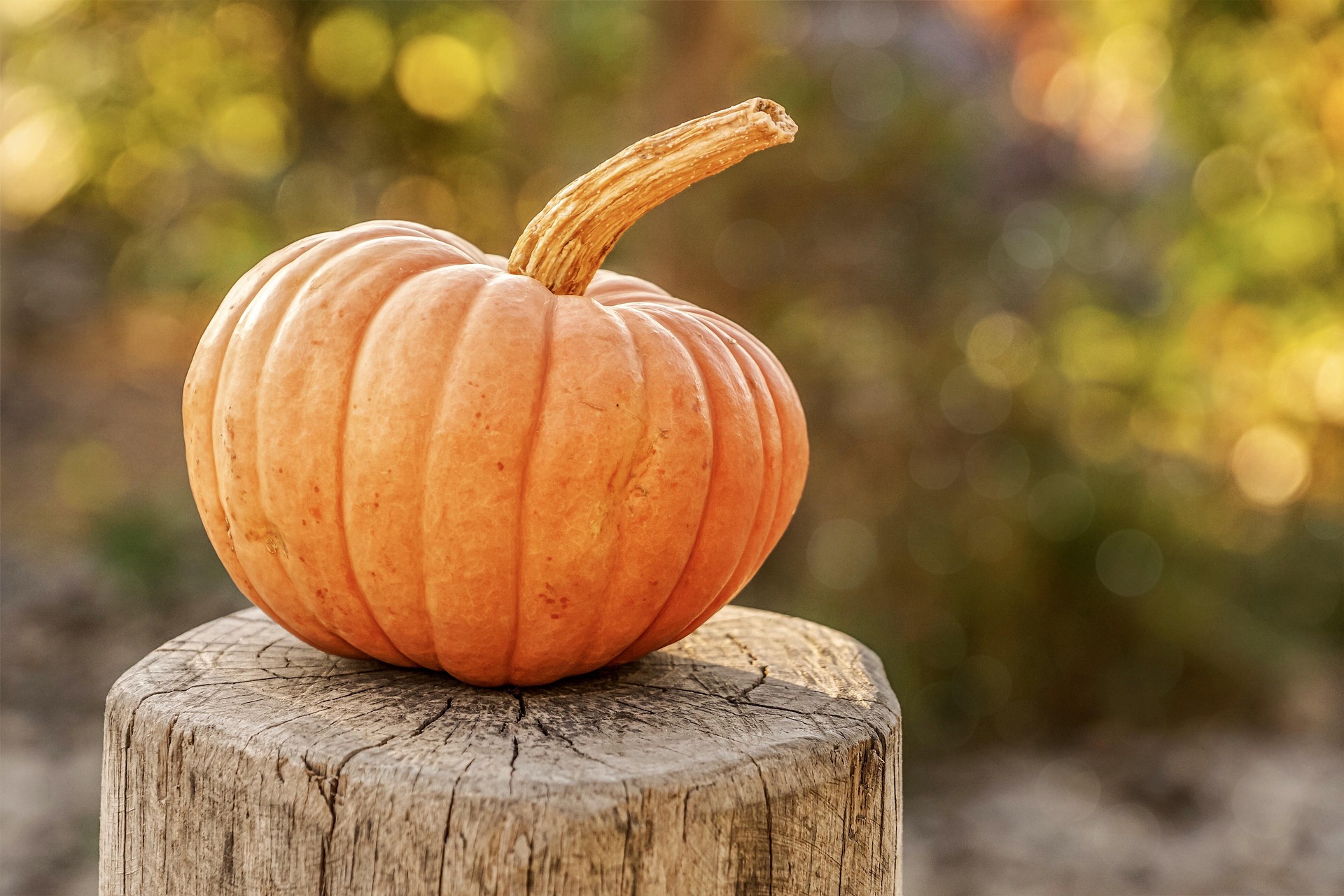A pumpkin is a well-known delicious and nutritious vegetable, and it is easy to grow for yourself or for the market. They are sensitive to cold, that is why you must sow seeds directly well after the danger of frost is past and the soil has thoroughly warmed to a temperature between 18 and 35 °C. First make sure your soil is healthy.
If pumpkins do not thrive, the problem often lies in the soil. Healthy garden soil makes healthy plants that are less vulnerable to pests.
What to do to make the soil healthy
Clear out rocks and debris: To dig up grass, use a spade to cut the sod into small squares and pry from the planting area. Loosen the soil: If it is your very first garden, loosen the soil to a depth of at least 20 cm so that roots can reach down. Add organic matter: Compost and aged manure not only feed the soil with nutrients but also drains well, loosens the soil to provide more oxygen to plants, and stabilises and anchors plant roots.
Spread a minimum of 5 cm of compost or aged manure onto your soil. If it is your first garden and you need better soil, we recommend working in the compost. If your garden is established, we recommend a no-dig approach and leaving the compost on the surface. This exposes fewer weed seeds and does not disturb the soil structure. Let the worms do the digging in for you! Level the garden bed: Rake or hoe the surface to level it.
How to plant the pumpkin:
Vining pumpkins require a minimum of 4,6 to 9,3 square metres per hill. If you are short of space, ensure the vines are directed to the outer edge of the garden bed. Sow seeds either in rows 26 m apart, or plant in hills 13 m apart. A hill does not mean the soil has to be mounded; it is a spot containing a group of plants or seeds. Hills warm soil quickly (so seeds germinate quicker), and aid with drainage and pest control.
Prepare hills by digging down 30 to 40 cm and mixing/filling in with lots of aged manure and/or compost. In rows, plant seeds 15 to 30 cm apart. Once seedlings are 5 cm tall, thin to one plant every 45 to 90 cm. In hills, plant seeds 2,5 cm deep with 4 or 5 seeds per hill. Keep seeds moist until germination. When seedlings are 5 cm tall, thin to two or three plants per hill by snipping out unwanted plants. Plant miniature varieties 25 mm deep, with two or three seeds every 6,5 m in the row. Rows should be 20 to 26 m apart, with seedlings thinned to the best plant every 0,6 m when they have their first true leaves.
Grow them Use row covers to protect plants early in the season, and to prevent insect problems. However, remember to remove covers before flowering to allow pollination. Bees are essential for pollination, so be mindful when using insecticides to kill bugs or fungicides to control fungi. How much water is needed? Pumpkins need 250 mm of water per week. Water deeply in the morning and on very hot afternoons, especially during fruit set. Avoid watering foliage and fruit unless it is a sunny day.
Also give fertilizer When plants are about 30 cm tall, just before vines begin to run, fertilise regularly with a high-nitrogen formula. Just before the blooming period, switch to a high-phosphorus formula fertiliser. It is normal if the first flowers do not form fruits. Both male and female blossoms need to open.
How to grow a bigger pumpkin After a few pumpkins have formed, pinch off the fuzzy ends of each vine to stop vine growth and focus plant energy on the fruit. Pruning the vines may help with space and fruit formation. Pumpkins produce main vines (from the base/centre of the plant), secondary vines from the main ones, and tertiary vines from the secondary vines. All may have flowers. Once the fruit has started to develop, prune the main and secondary vines to 3 m to 5 m and remove the tertiary vines, if so desired. Bury the cut tips in soil.

When to harvest
Your best bet is to harvest pumpkins when they are fully mature and not before. Do not pick pumpkins off the vine because they have reached your desired size.
- Harvest on a dry day after the plants have died back and the pumpkin skins are hard.
- The skin of a ripening pumpkin turns a deep, solid colour (orange for most varieties), and the stem hardens.
- Thump the pumpkin with a finger; the rind will feel hard and sound hollow. Press a fingernail into the pumpkin’s skin; if it resists puncture, it is ripe.
- Carefully cut the fruit off the vine with a sharp knife or pruners; do not tear it. Be sure not to cut too close to the pumpkin. Leave 7 to 8 cm of stem to increase its keeping time.
- Handle pumpkins very gently, or they may bruise. Never carry a pumpkin by its stem. Properly saved seeds should last for 6 years. To toughen the skin and intensify flavour, cure pumpkins in a sunny spot for about 10 days in a hot area with 80 to 85% humidity.
Sources:
Boeckmann, C. (2023) Pumpkin Planting & Growing. Available at: https://www.almanac.com/plant/pumpkins









